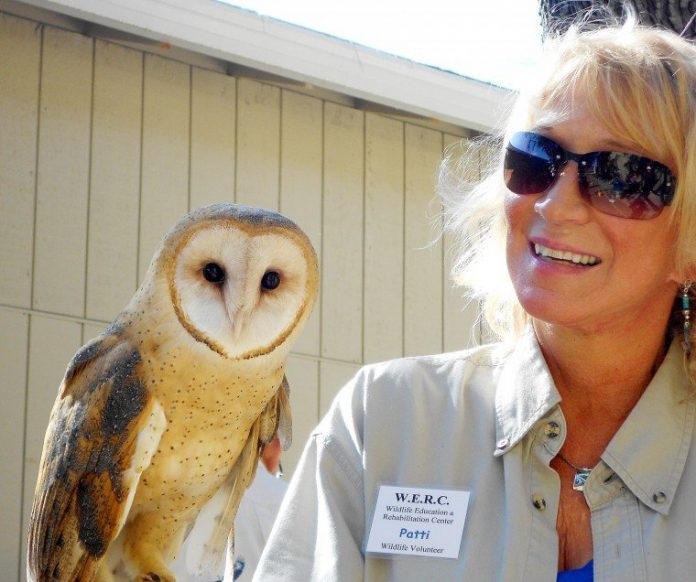
The Wildlife Education and Rehabilitation Center held its 17th annual Barbecue and Auction Saturday. The organization uses this event to not only recognize its sponsors and volunteers, but also allow the public to bid on various donated prizes in auction while educating them to respect nature.
Sue Howell, the founder of WERC, was as visible as the animals on display, greeting almost every guest with her warm smile as they entered the Buddhist Community Center.
“It’s just so wonderful to see all the people showing up to help,” Howell said. “The community is our backbone, if it was not for them, we could not do all the things we do to help these animals have a another chance at life.”
To start the event, WERC volunteers put on display various birds of prey that were given this second chance. However, due to various reasons, were unable to be released back into the wild. These “educational animals,” as they are now referred to, help the public better understand them while at the same time show the public what exactly the organization does.
“Not only do they help us teach the public about these beautiful animals, but we oftentimes use them in the rehabilitation of other birds, such as surrogate parents or for imprinting purposes.” explained Patti McKay, one of the WERC volunteers handling one of eight birds of prey on display at the event.
Imprinting is a term that describes how some animals decide who they are. It is a crucial behavioral process in growing animals and occurs during a period in which the young establish the concept of “parent” and “self.” Taking place early in life, it is an irreversible process.
As McKay explains all of this, the barn owl resting on her outstretched arm comes to life and flaps its wings a few times while re-adjusting itself on her arm.
“Barnette here was originally someone’s pet, and had imprinted herself onto humans. This meant, when we found her, no matter what we did, we could not release her into the wild because she would not be able to hunt for food properly. And even if we were somehow able to fix that problem, others of her species would not let her have her own territory to hunt in, which would cause her to starve anyway.”
After the public had a chance to be educated, Howell and her volunteers served lunch to the crowd, many looking at the many items up for auction as they stood in line for their meal.
“It’s so fun to be here,” said Jennifer Turner, 42, from San Jose, who was examining a two-story bird house while waiting in line for lunch. “I love silent auctions, and this is such a great cause to help. I can’t think of a better way to spend my Saturday.”
Other items up for bid varied from one-of-a-kind jewelry to paintings and sketches
Claudia Blodgett could not agree more, having attended the event last year, she insisted on attending again this year.
“It’s great coming to this and seeing people I know, plus I was lucky enough to win the auction last year to handle some of the birds at the center last year, Blodgett explained. “Coming back and being able to get an update on how they are all doing is really nice too.”
Shortly after stomachs were full, Howell and her volunteers started the highly anticipated auction. Auctioneer Jerry Neece quickly got the crowd into the bidding, and sold a 27-speed bike for $625, and two, one-week vacations to the south shore of Lake Tahoe for $925 each.
“I came ready to buy a couple of the items,” said Barbara Moor, 48, from Morgan Hill. “But the bidding was cut-throat. There was one guy who pulled all of his money out of his pocket to count it to make sure he could out-bid some other guy for a bike I think. It was fun to watch, but all the things I wanted quickly became too expensive for my blood.”
The organization hopes to bring in around $15,000 from the event, enough to run the facilities for about three months.
WERC relies totally on donations from the private sector to cover the costs associated with treating, feeding and sheltering the various wild animals within their care.














